
Managing a San Mateo commercial property on your own can be challenging on a good day and risky on a bad day. Whether you’re a new landlord or an experienced investor, finding the time, resources, and expertise to effectively manage your own commercial rental property isn’t always easy.
There are several pitfalls, including easy and expensive mistakes, loss of income, and missed opportunities.
Professional San Mateo property management offers a lot of value. There’s less risk and hassle on your end, and a lot more peace of mind. You need local and industry experts who have done it all before.
Let’s take a look at the main pitfalls to managing your own commercial rentals.
Pitfalls with Short-Term Lease Agreements
Lease terms for commercial properties are flexible. They can be one, three, five, 10 years, or even longer. A lot of self-managing owners will feel too desperate to grab the first tenant who shows and interest, and that could mean accepting a one or two-year lease instead of a more lucrative and stable 10-year lease.
Typically, owners will get a better rate and more substantial concessions with a longer lease. However, it’s easy to make this mistake of thinking in the short term only. Self-managers will often focus on what is needed today instead of planning for the years ahead. A property manager can see this before you do, and help you negotiate the best possible lease agreement with a reliable and well-qualified commercial tenant.
Occupancy Costs Can be a Surprise
Another common pitfall we see with self-managing commercial property owners is the failure to accurately consider occupancy costs. Commercial real estate rates are quoted on a per-square-foot per year basis. Owners will need to calculate the total dollar amount they’ll spend when they acquire a new investment property.
This requires estimating the rent schedule throughout the term of the lease agreement. Operating expenses will have to be covered on your end or passed through to tenants. Some will be expected and others will be variable.
Talking to a property manager before you acquire your next investment is the best way to determine what you’ll really be spending.
Vacancy Loss and Length
Your commercial property isn’t going to make any money if it’s not occupied.
Failing to attract, place, and retain good tenants is a major pitfall to self-management. If you have a large mall or a 100-unit apartment building and half the units are empty, you’re going to lose a lot of money.
Property managers understand tenants. They can negotiate better deals, set competitive but profitable market rents, and work with you to increase the overall occupancy rate for your property.
DIY Property Management and Tenant Relations
Another major pitfall is that self-managing commercial property owners have a hard time with tenant relationships. If you’re too friendly, and this will lead tenants to think they can get away with things like late payments, unapproved improvements and building alterations, and other lease violations. If you have trouble enforcing your contract because you want to be “nice,” you’re going to find yourself losing money and respect.
Don’t make the mistake of self-managing your commercial property. Contact us at Bayside Management to access our experience, resources, and best practices.
 Founded in 1982 in Marin County, Bayside Management has expanded to offer full-service San Mateo real estate property management to the entire San Francisco Peninsula. We manage single-family properties, multi-unit complexes, commercial properties, and homeowner associations.
Founded in 1982 in Marin County, Bayside Management has expanded to offer full-service San Mateo real estate property management to the entire San Francisco Peninsula. We manage single-family properties, multi-unit complexes, commercial properties, and homeowner associations.
 Peter Boda
Peter Boda Jeff Hacker
Jeff Hacker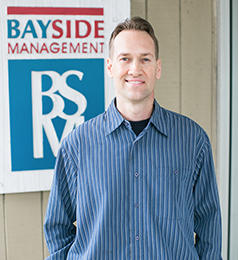 Dylan Motchar
Dylan Motchar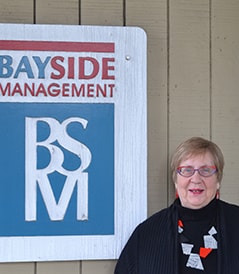 Barbara Boyd
Barbara Boyd Joanelle Russell
Joanelle Russell Mary Wiegmann
Mary Wiegmann Joseph DeNoia
Joseph DeNoia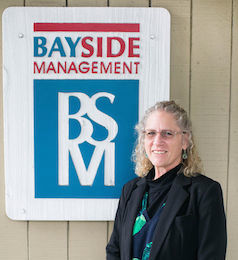 Beth Nagy
Beth Nagy Jasmin Peraza
Jasmin Peraza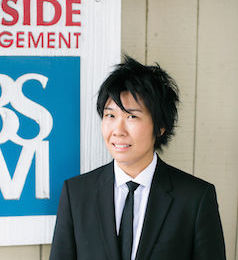 Carmin Wong
Carmin Wong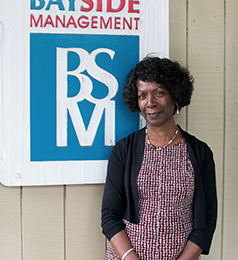 Pauline Smith
Pauline Smith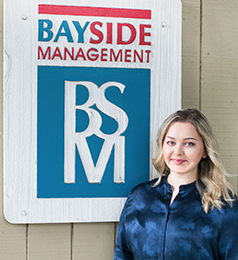 Victoria Taylor
Victoria Taylor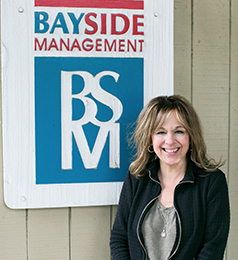 Yvette Perreca
Yvette Perreca Elizabeth Valladares
Elizabeth Valladares Anthony Thompson
Anthony Thompson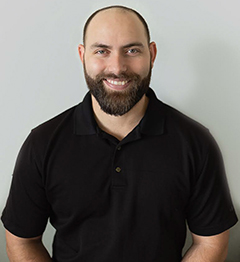 Drew Reischl
Drew Reischl Nick Lange
Nick Lange Collette Counter
Collette Counter Justin Barton
Justin Barton